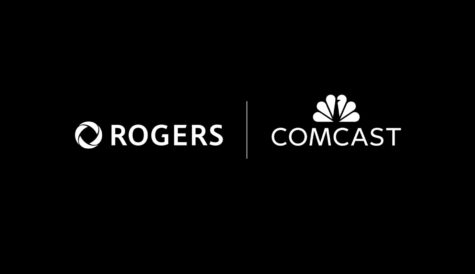Virtual realities: the transition of playout technologies
 Software virtualised on standard platforms promises to revolutionise the cost and agility of broadcast operations, but the transition is not without difficulty. Adrian Pennington reports.
Software virtualised on standard platforms promises to revolutionise the cost and agility of broadcast operations, but the transition is not without difficulty. Adrian Pennington reports.
In addressing the challenge of online video, broadcasters are feeling the pull of two forces: IP becoming the dominant video delivery technology and the proliferation of connected devices. The key challenge is how to keep pace with rapid changes in video technology and consumer demand without breaking the bank, over-provisioning resources and taking unnecessary risks.
Video infrastructure must support business models that are shifting from high fixed and low variable costing to low fixed and high variable infrastructure expenditures.
The obvious answer – if you are a software-only technology provider such as Elemental Technologies – is software. “Providers rolling out premium video streaming services can immediately respond to changes in consumer demand, strengthen their competitive position, and speed time to market by deploying software-defined video as the core of their next-generation infrastructures,” argues Keith Wymbs, Elemental’s chief marketing officer. “[This] frees providers from the constraints of dedicated equipment by allowing for the best architecture and processor combination to be used for a particular application – even if that application changes over time.”
Migration to software
Video technology provider Harmonic’s expectation now is that almost everything it does can migrate to software. Its new VOS platform is “a clear statement of our intent to drive to software-defined workflows with IT CPU technology handling all the processing for compression, playout, control, management, and more”, according to Andy Warman, director of product line management, servers and storage. “Value comes from software licence keying that lets you pick what capabilities you want to use, so you pay only for what you need. We can even extend this idea to pay for services only when you need them,” he says.
Almost every major vendor of hardware products has unveiled plans to provide software-only variants and we can expect a lot on this topic at IBC. However, software on standard platforms ulimtately enables virtualisation of the technical infrastructure and this is where the significant benefits accrue.
“Once we recognise this, the processing, storage and networking infrastructure can then be thought of as provisioned, pooled resources,” says Lawrence Kaplan, a broadcast technology veteran who served at Grass Valley, Sony and Omneon before founding SDVI. “The virtualised infrastructure supports web-based services, which in turn support workflow applications.”
The notion of software on virtualised, standard platforms is well-established in other industries, but wholesale migration in broadcast is going to take some time. “We are still in the early stages of what is both an important but difficult transition,” says Steve Plunkett, chief technology officer, Red Bee Media, now part of Ericsson. “The generalisation of hardware creates a less deterministic environment for the software to operate upon,” he says. “As the hardware and software becomes more abstracted, the demarcation point of responsibility between vendor and user changes. Product designers and developers know exactly what to expect from their hardware stack and optimise accordingly, but in the ‘software-running-on-hardware-of-your-choice’ world, things are less certain.”
For example, different CPU implementations will provide different functional and performance characteristics through clock-speed variations, cache sizes/levels, multi-core architectures, internal bandwidth, specialised accelerators – and that’s just the CPU. With storage throughput variations, memory size/bus bandwidth differences, GPUs, LAN throughput, OS and driver versions, the list goes on.
“Support becomes more complex also as the vendor needs to accommodate a broader range of deployment scenarios. This is business as usual in the general IT world but something that our industry needs to adapt to quickly,” says Plunkett.
The actual shift to commodity or Commercial-Off-the-Shelf (COTS) hardware and software is neither particularly visible nor new. IT organisations within broadcasters have been using software plus COTS hardware for a number of years, and have seen benefits in terms of improved service flexibility, interoperability and reduced costs.
“The same holds true of cloud technologies,” suggests Steve Reynolds, chief technology officer, Imagine Communications. “IT organisations had to go through a period of trial and error before placing key applications onto their own private or public clouds, and cloud is now accepted practice globally.”
Largely software
Non-real-time infrastructure that is already largely software includes all file-based receipt, graphics systems, editing, file interchange, and processing up to the edge of a playout TX chain. When it comes to file-based ingest, things like transcoding media, and in the playout domain up and down conversion, aspect ratio conversion and audio remapping, have all been available in software-based solutions for a long time. Function collapse, often referred to as Channel-in-a-Box, or integrated channel playout, is where most software-based activity has been taking place (see below for more on virtualised playout).
“The downward pressure on operating expenses for broadcasters is relentless,” says Micky Edwards, vice-president, sales, BroadStream. “Cutting costs can make companies feel like they are taking on undue risk in terms of reliability. However, we can build completely redundant playout systems today cheaper than building a single primary path in the traditional way. As such, companies are not only better protected in the event of a hardware failure, they’re paying less for the solution and for the infrastructure to support it.”
Specific video processing functions can be virtualised in public or private data centres or in cloud-based infrastructures. Integrated cloud platforms can ramp resources up and down depending on demand, preventing over-investment in infrastructure.
Those areas that remain hardware-centric include components that interface with baseband signals, those that have accelerated performance and those that are commercially tied to a hardware form factor.
“As buyers increasingly conclude that software products can increase flexibility, those vendors who cannot demonstrate clear value for their hardware will find it difficult to resist the pressure to release software only variants,” says Red Bee’s Plunkett, who adds that the momentum behind IP/ ethernet replacement of SDI will further reduce the rationale for [icitspot id=”263001″ template=”box-story”]hardware based solutions.
A substantial amount of Imagine’s broadcast tech, from traffic and scheduling to automation and asset management, has already shifted to COTS hardware and software. “However hardware-centric video servers may seem, our video server products have moved very quickly to mostly software and COTS,” says Reynolds. “Our compression portfolio is increasingly comprised of software-based technologies utilising hardware acceleration where economics and density requirement dictates – and with regard to video infrastructure, we are creating hybrid platforms that work with both legacy and IP.”
Reynolds admits that technology including baseband routers will remain hardware-centric. “The key there is not to presume that legacy transport will disappear,” he says. “In fact, our approach is to enable a seamless on-ramp/off-ramp between IP and baseband transport via our SDN-based media orchestrator, which ensures that tomorrow’s IP-based workflows are managed transparently with today’s. Instead of requiring ‘forklift upgrades’ to the network, our focus is all about giving customers the flexibility to transition at their own pace to the software-centric, all-IP world.”
Cloud-washing
The early leader in workflow services running as software on a virtualised, standard platform was transcoding. Cloud-based collaborative editing applications are now catching-on (witness Adobe’s move from licensed software to cloud services) and playout is the next bastion to fall. Ultimately, most production and distribution workflows will be compatible with virtualised infrastructures. “The pace of the shift is largely driven by the ability of the standard processing, storage, or networking platform to meet the technical requirements of the use case; the technical complexity of the use case; and the availability of a new class of software applications and web services that support virtualisation,” says Kaplan.
Peter Elvidge, head of global media management at Globecast, suggests that virtualisation is not as established as it should be despite some vendors making “great initial progress” with software-based solutions.
Kaplan agrees, noting that “many of the early leaders in this space have been acquired by larger players and that in general the trend has turned back towards hardware – often based on the arguments that it is easier to support. This is a trend that needs to be reversed if our industry is to remain flexible and competitive against other media types,” he says.
Nevertheless, the potential to innovate enabled by a truly software defined broadcast environment is exciting the industry. Channels can be deployed rapidly and changed dynamically in real time. “The implications of a virtualised production and distribution infrastructure are nothing less than revolutionary,” says Kaplan.
But to take full advantage of this software model the underlying infrastructure also needs to be highly automated and programmable. “Over the next one to three years we can expect to see the technology mature and our ability to harness it increase dramatically,” says Plunkett. “This will alter the economic basis for channel creation and operation significantly.”
Ian Hamilton, chief technology officer, Signiant, warns of ‘cloud washing’ where companies brand products with the buzzword ‘cloud’ without fundamentally changing the way they develop and support their software.
“The vagueness around the definition of cloud – which in its most diluted form is a metaphor for ubiquitous network connectivity – facilitates cloud-washing practices,” he says. “Typically, businesses engaged in cloud-washing take software designed for static on-premises deployment, wrap it in a virtual machine, allow businesses to deploy it on public cloud Infrastructure as a Service (IaaS) and pay by the hour to operate it. But this is not what software innovators mean when they say ‘cloud’ and there are some very significant services missing from cloud-washed software, especially for businesses.”
His prescription is Software as a Service (SaaS) where vendors “take ultimate responsibility for operation of the environment”, giving customers a virtualised infrastructure with continuous access to the latest product releases without impacting customisations. “SaaS automatically scales according to load for you, spinning up or down virtual machines as load dictates and load balancing across multiple instances,” he says.
Many current solutions still involve some type of proprietary hardware. “By using pure software product, broadcasters can be much more agile to respond to changing needs, formats and workflows,” says Edwards. “A support team can simply log in remotely to troubleshoot any issues. When you also consider the built-in redundancy of all systems, the economic transformation is significant.”
Paula Mathews, head of product for satellite and media at Arqiva, highlights the total cost-of-ownership impact of using standard platforms. These costs are not always immediately obvious, and must be considered before choosing to purchase this type of broadcast technology. For example, she says, COTS platforms are continually being developed, meaning they quickly become obsolete. Wholesale replacement can be extremely expensive. In addition, on-going interruption-free operations should be a key factor in purchase decisions. “With the traditional models of software running on bespoke hardware, the refresh lifecycle was entirely predictable and therefore so was the RoI,” she says. “While software-based broadcast technology running on [COTS] can be attractive in terms of an initial purchase price, this can mean shorter RoI timescales which therefore don’t translate into cost-savings in channel price in the long-term for broadcasters and service providers with large, complex installations.”
For service providers like Globecast what really makes the difference is the business model. “The way you buy it, and how locked into a particular solution you become, is increasingly a very important factor in any decision process,” says Elvidge. “As our customers want to grow internationally, and reach more people on a wider variety of devices, we need to offer a range of capabilities and be agile. The more flexible ways to buy technology, that are usually associated with software, are critical for us.”
One key area of savings could be limiting the amount of activity that needs to be performed in real time. “Arguably the most interesting concept is related to how much we can avoid doing in real-time, at point of playout, and instead process earlier, in non-real-time in the file domain,” says Elvidge. Areas where cost savings could be made include the insertion of complex three dimensional graphics.
Virtual environment
The day when playout automation can be run on virtual machines in a data centre or in a public cloud over IP networks is drawing closer. “It is increasingly viable to build these environments, with sophisticated functionality, in development settings, and the promise of leveraging the huge investments being made by facilities and cloud providers is very compelling indeed,” says Plunkett. “Any major vendor can probably show a sneak preview of their virtualised product implementation and every broadcaster or service provider should be investing serious time and effort into evaluation and experimentation in this area.”
Demands on the control system will inevitably increase as more playout is hosted in the cloud. “Automation solutions, which incorporate the ability to drive all channel variants including those with live content and late breaking events, or that optimise the number of channels a single operator can manage, are poised to offer the most complete solution,” says Tom Gittins, sales director, Pebble Beach Systems. “Control systems that accommodate the need for broadcasters to work across SDI and IP/virtual machine environments provide operational benefits during this transition by isolating the operational staff from the underlying system architecture.”
Media validation will be key in virtual environments, as the operator needs to know that the output of each channel is secure, regardless of its geographical location.
“While broadcasters can now quickly and cost-effectively launch multiple IP channels, there is an inevitable growth in the volume of information which requires monitoring and processing,” says Gittins. “The challenge becomes how to manage multiple channels efficiently without a corresponding increase in the number of operators.”
While there aren’t many obstacles to virtualising playout in technology terms, “the real challenge comes in getting vendors to accept and support these architectures”, Globecast’s Elvidge says. “We’ve already seen a major vendor we use that was once promoting a software solution, where you buy your own server, reverting to selling an integrated appliance.”
Imagine is enthusiastic about playout in the cloud, believing that it promises to lower the cost of channel creation at a time when established players need to react quickly to OTT. Reynolds describes a playout-in-the-cloud pay-as-you-go model that not only reduces cost and time but also removes the geographic barriers of legacy technologies, “meaning that channels can be created on the fly, virtually at any location in the world. Have a media asset that you want to distribute and market in a new location anywhere in the world? Then find a distribution partner, such as a transmitter owner, satellite provider, or fixed/cable provider, and distribute your content. These are some of the new capabilities that are fundamentally changing the business.”
Others are more cautious. “Although there’s nothing preventing virtual machines from handling playout, most customers we’ve spoken to feel that a data-centre is a bit too far from home for live playout at this time,” says Edwards. Arqiva’s Mathews agrees: “There is still work to be done. Cost models are one such area, as moving content in and out of the cloud can quickly become expensive,” he says. “A need to gain confidence in both the ability and security of these services is also a key area for progression. The rigours of complex playout can be demanding and it is essential broadcasters have the confidence that their tech can cope, as even non-virtualised software systems can struggle.” Bespoke hardware (with SDI or HD-SDI interfaces) still has its place in linear playout, she feels. “While there are some software alternatives, there is still a level of comfort that we get from the physical SDI, especially when working with routing signals, emergency switching or distribution. Granted, [technical standard Audio Video Bridge] could change this, but there is still a way to go here.”
Harmonic’s Warman agrees, suggesting that baseband over IP still needs to be fully worked out and standardised so there is a common mechanism for the whole industry.
It is nevertheless logical and reasonable to expect that functionality from the Channel-in-a-Box and integrated-channel type solutions for playout will migrate to the data centre, and the performance and feature set will continue to expand. “While this is beginning to happen, virtualised playout is by far and away the exception rather than the rule,” says Warman. “There is however work still ahead in terms of standardisation, control, and management that is needed for sophisticated playout systems to gain mass appeal. As a counterpoint, now may also be the time to reassess what is needed to deliver an effective channel and how processes in that chain need to interact to deliver the right result.”



